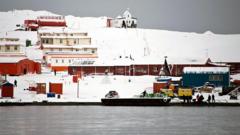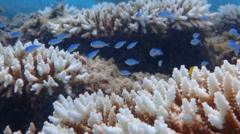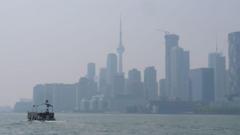The influx of Antarctic tourists offers Ushuaia's residents a mixed bag of prosperity and challenges, as the city grapples with rising costs and limited resources.
**Tourism Boom in Ushuaia: Prosperity vs. Environmental Strain**

**Tourism Boom in Ushuaia: Prosperity vs. Environmental Strain**
Surging tourist numbers in Ushuaia highlight economic growth but raise concerns over local lifestyles and environmental impact.
With the mercury rising in Ushuaia, Argentina—known as the “end of the world”—the city is bustling with tourists eager to experience Antarctica, an opportunity that is paying off financially for locals but also straining resources. Approximately 90 percent of Antarctic cruises commence from this picturesque city, which sees a significant spike in visitors who often choose to spend a night or two before their voyage. The charm of Ushuaia lies not just in its stunning landscapes, but the unique allure it offers as the southernmost city in the world.
As of last year, Ushuaia served as the launching point for about 111,500 Antarctic travelers, a massive increase from around 35,500 a decade ago. This year, projections indicate a 10 percent rise in visitors. Many arriving tourists typically opt for leisure-filled days, indulging in adventures to local attractions like Martillo Island to witness penguins in their native habitat.
While this tourism boom is financially beneficial for Ushuaia’s approximately 83,000 residents, it comes at a cost. Locals are increasingly feeling the pressure of rising living costs and strained resources, including a growing housing shortage as the influx of visitors drives demand. “We sell an aura,” asserts Julio Lovece, president of the Ushuaia Foundation XXI, emphasizing the city's unique atmosphere as its primary draw. The remoteness that makes Ushuaia so attractive is ironically also exacerbating its struggles to accommodate a burgeoning population and satisfy travelers' desires for sustainable experiences.
The nature of tourism here beckons a deeper contemplation about the balance between economic benefit and environmental preservation as Ushuaia navigates its role as a gateway to one of the world’s most pristine and vulnerable regions. As the city's infrastructure faces mounting pressure, the question lingers: how long can the “end of the world” keep its wild charm intact?
As of last year, Ushuaia served as the launching point for about 111,500 Antarctic travelers, a massive increase from around 35,500 a decade ago. This year, projections indicate a 10 percent rise in visitors. Many arriving tourists typically opt for leisure-filled days, indulging in adventures to local attractions like Martillo Island to witness penguins in their native habitat.
While this tourism boom is financially beneficial for Ushuaia’s approximately 83,000 residents, it comes at a cost. Locals are increasingly feeling the pressure of rising living costs and strained resources, including a growing housing shortage as the influx of visitors drives demand. “We sell an aura,” asserts Julio Lovece, president of the Ushuaia Foundation XXI, emphasizing the city's unique atmosphere as its primary draw. The remoteness that makes Ushuaia so attractive is ironically also exacerbating its struggles to accommodate a burgeoning population and satisfy travelers' desires for sustainable experiences.
The nature of tourism here beckons a deeper contemplation about the balance between economic benefit and environmental preservation as Ushuaia navigates its role as a gateway to one of the world’s most pristine and vulnerable regions. As the city's infrastructure faces mounting pressure, the question lingers: how long can the “end of the world” keep its wild charm intact?


















